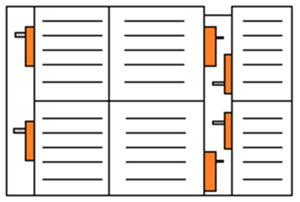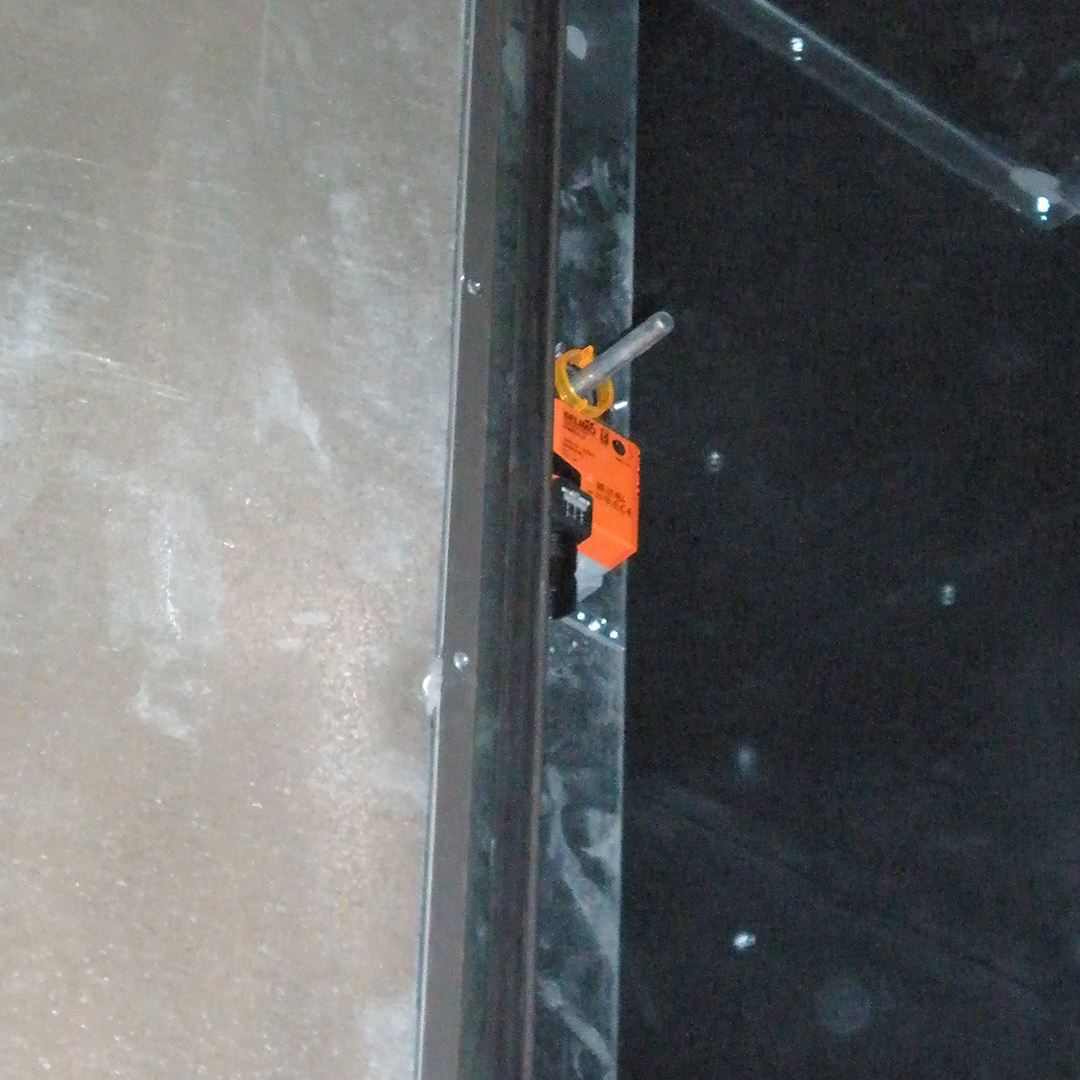Sizing Damper Actuators for Data Center Protection
Published by
Chris Jones
on
Data centers are the backbone of our economy, serving businesses and communications throughout the world. Protecting data does not only mean from cyber-attacks and extreme weather conditions but also function within sustainable design. When evaluating HVAC equipment in data centers, it is advisable to accurately measure all dampers and ensure all outside air control dampers can be sealed when necessary to reduce humidity and heat.

Data center platforms include high-density computing, power requirements, and growing amounts of multi tenancy. Cloud computing and virtualization have pushed the next-generation data center model to adopt new ways to help control the overall infrastructure. Not too long ago, data center managers relied on a conventional room thermostat to indicate the ambient temperature of a data center. The temperature was set to the mid-60s˚F for adequate cooling.
A room thermostat only indicates the temperature at the thermostat's location, typically an interior wall. It is far more useful to know the temperature at the air inlets of the IT devices. Being able to see data on plots of temperatures from multiple sensors can identify hot spots and areas of overcooling. This information fed to the controller can provide feedback to the HVAC equipment to adjust temperatures.
HVAC equipment in data centers vary as geography, and local climate requires. The dry heat of the western United States to the temperature and humidity of the southern states are challenges for design engineers. It is ultimately driving equipment selection with an impact on damper actuation.
Damper actuator control options are typically modulating control by 2-10 VDC. Though 2-10 VDC is an economical control input solution, it can have limitations due to damper section layout strategies. Multi-section jackshafted dampers require multiple actuators to drive the dampers. Often a large number of actuators force contractors to get creative in wiring and mounting to dampers. Conventionally wiring actuators with 2-10 VDC can become complicated and costly. Data centers often use an actuators position feedback voltage to identify operational and performance issues. However, multi-section dampers with multiple actuators usually do not allow for operational transparency of each actuator feedback. Or the HVAC controllers do not have the number of analog inputs required for each actuators position feedback, again forcing contractors to get creative. The result, reduced performance transparency.
 Belimo damper sizing recommendation is one damper section with one actuator.
Belimo damper sizing recommendation is one damper section with one actuator.Including a dedicated minimum outside air damper built into the damper array is a solution design engineers are implementing. A small section of the damper is used to control Min-OA and will have a significant impact on OA damper control authority and system efficiency. In addition to sizing and selection, expanded control options are available as HVAC devices evolve in today's technology arena, digital communications options are available with smart edge devices (actuators, valves, and sensors). Digital solutions can reduce the contractor's burden and provide performance transparency. Data centers are a logical potential user of digital communication to edge devices such as actuators and sensors with BACnet MS/TP and better BACnet/IP.
Due to high airflow requirements in most data centers, control dampers are designed as one operating assembly. This means dampers are jackshafted together and typically yield higher torque requirements. Jackshafted dampers can introduce contractor complexities due to the mechanical torque, which can typically reduce the dampers operating mechanical angle of rotation—further complicating a contractor's task of ensuring desired operation and performance.
Factors to improving data center damper array:
- One damper section with one actuator, Wire multiple actuators in parallel (2-10 VDC)
- Stagger individual damper sections with sleeves, allowing for access to control shafts.
- Allow for analog position feedback to dedicated AI's
- Use communicating Actuators, Valves, and Sensors
Communicating devices provide:
- Ease of wiring, can be further improved with structured wiring and plug and play
- Reduction of physical IO,
- Advanced performance transparency via BACnet PICS
The required actuator information for damper sizing is
- Supply Voltage
- Damper Torque
- Control Signal
- Fail-safe or non-fail-safe
- Feedback
- Mechanical Accessories
 download Belimo SelectPro™, the software tool for accurately sizing and selecting valves, actuators, sensors, and replacement solutions. Belimo offers a comprehensive series of fail-safe and non-fail-safe damper actuators with torque from 22 to 1400 in-lb direct-coupled, rotary or linear travel that can handle many data center HVAC applications. The actuators use brushless DC motor technology controlled by an Application Specific Integrated Circuit (ASIC) to provide stall protection, lower power consumption, higher efficiency, and smaller transformer sizing. The end result – long life cycles, lower energy consumption, and durability in operation.
download Belimo SelectPro™, the software tool for accurately sizing and selecting valves, actuators, sensors, and replacement solutions. Belimo offers a comprehensive series of fail-safe and non-fail-safe damper actuators with torque from 22 to 1400 in-lb direct-coupled, rotary or linear travel that can handle many data center HVAC applications. The actuators use brushless DC motor technology controlled by an Application Specific Integrated Circuit (ASIC) to provide stall protection, lower power consumption, higher efficiency, and smaller transformer sizing. The end result – long life cycles, lower energy consumption, and durability in operation.
Tags:
Technical Tips

